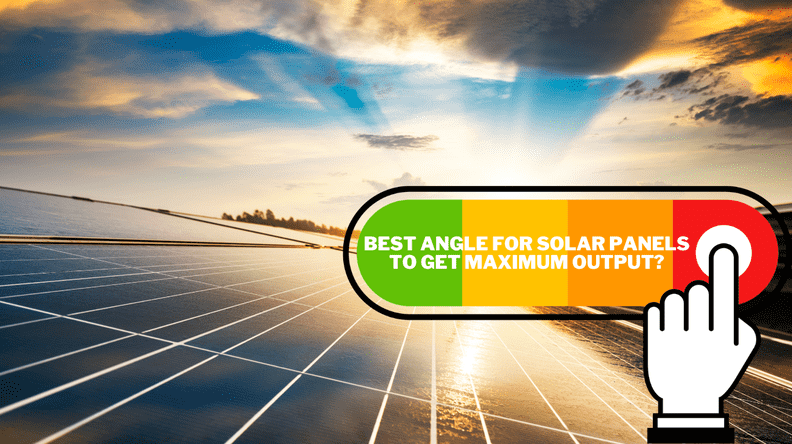The performance of solar panels varies depending on several factors, one of which is the tilt angle of the solar array. What is a tilt angle? It refers to the number of degrees your array is tilted from the ground while pointed towards the sun.
The simplest and most straightforward way to determine the optimal tilt is by matching it to the latitude of your home. However, this can also depend on your north-south location. In the U.S., it is common for homeowners to tilt their panels at a 30-45 degree angle.
Why does solar panel angle matter?
Before diving into how a solar panel’s angle influences its performance, it’s important to understand why it matters.
Solar cells, the small sections on each panel, are made of a special semiconductor material capable of absorbing radiant energy (photons). However, this semiconductor can only absorb a specific wavelength, meaning only a portion of the light that hits it can be collected, according to solar specialists.
Therefore, for the photons to effectively enter the solar cells, the panels need to be positioned to provide the most direct exposure. To enable this interaction, it’s generally recommended to angle solar panels perpendicular to the sun’s rays.
Optimal Solar Panel Angle
While the direction of solar panels is typically consistent, the optimal tilt angle varies across the U.S. depending on your latitude. To determine the best angle for your system, start by finding your home’s latitude, as this gives you the ideal tilt when the sun is directly over the equator.
For instance, in Los Angeles (latitude ~34° N), your panels should be tilted at around 34°. In New York City, where the latitude is approximately 40.7° N, the optimal tilt would be closer to 41°. Seasonal changes also affect the tilt; expect an adjustment of about 15 degrees as the sun shifts throughout the year. In Southern California, the angle may range from 19° in summer to 49° in winter, while in New York, it can vary from 25° to 56°.
If you’re located outside the 30-45° N latitude range, such as in Alaska or Hawaii, you’ll need to account for the earth’s curvature, making online tools like PVWatts or Footprint Hero useful for more precise calculations. These tools consider multiple factors like:
- Altitude Latitude and longitude
- Tilt angle
- Air temperature
- windspeed
- Temperature coefficients
- Efficiency loss
- Radiative transfer
- Factors that affect solar panel angle Latitude
Key Factors Affecting Solar Panel Angle:
Latitude: The further north, the more critical the tilt becomes.
Roof pitch: Your roof’s slope influences the ideal panel angle.
Time of year: Seasonal variations can cause the optimal angle to shift by +/- 15°.
For maximum efficiency, align the panel angle with the sun’s equatorial position to avoid energy losses.
If you have any more questions, talk to us! One of our solar experts will be happy to help.




